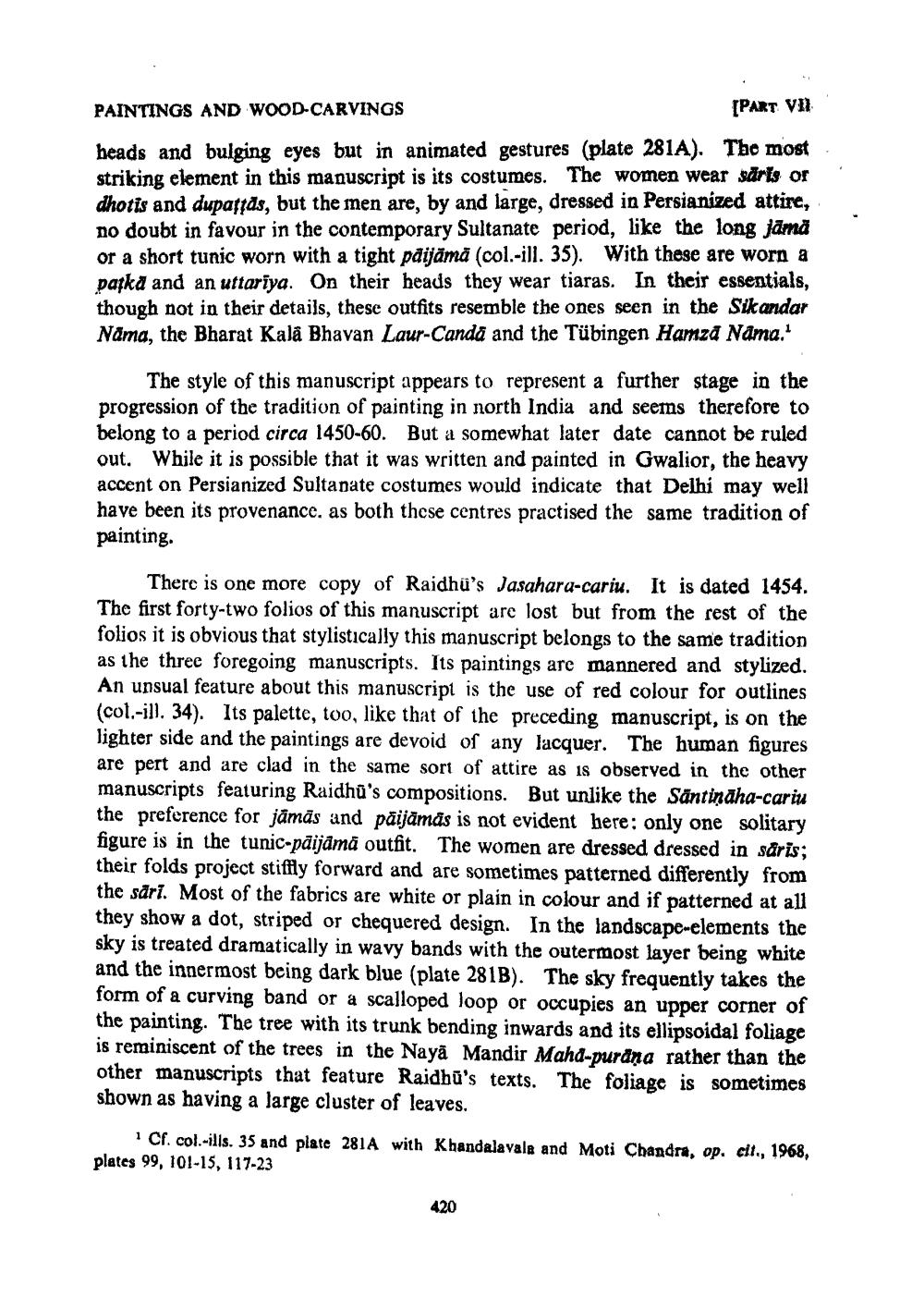________________
PAINTINGS AND WOOD-CARVINGS
[PART VN
heads and bulging eyes but in animated gestures (plate 281A). The most. striking element in this manuscript is its costumes. The women wear särts or dhotis and dupattas, but the men are, by and large, dressed in Persianized attire, no doubt in favour in the contemporary Sultanate period, like the long jāmā or a short tunic worn with a tight päijämä (col. ill. 35). With these are worn a parka and an uttariya. On their heads they wear tiaras. In their essentials, though not in their details, these outfits resemble the ones seen in the Sikandar Näma, the Bharat Kala Bhavan Laur-Canda and the Tübingen Hamzd Nama."
The style of this manuscript appears to represent a further stage in the progression of the tradition of painting in north India and seems therefore to belong to a period circa 1450-60. But a somewhat later date cannot be ruled out. While it is possible that it was written and painted in Gwalior, the heavy accent on Persianized Sultanate costumes would indicate that Delhi may well have been its provenance, as both these centres practised the same tradition of painting.
There is one more copy of Raidhü's Jasahara-cariu. It is dated 1454. The first forty-two folios of this manuscript are lost but from the rest of the folios it is obvious that stylistically this manuscript belongs to the same tradition as the three foregoing manuscripts. Its paintings are mannered and stylized. An unsual feature about this manuscript is the use of red colour for outlines (col.-ill. 34). Its palette, too, like that of the preceding manuscript, is on the lighter side and the paintings are devoid of any lacquer. The human figures are pert and are clad in the same sort of attire as is observed in the other manuscripts featuring Raidhū's compositions. But unlike the Säntināha-cariu the preference for jāmās and păijāmás is not evident here: only one solitary figure is in the tunic-päijämä outfit. The women are dressed dressed in saris; their folds project stiffly forward and are sometimes patterned differently from the sări. Most of the fabrics are white or plain in colour and if patterned at all they show a dot, striped or chequered design. In the landscape-elements the sky is treated dramatically in wavy bands with the outermost layer being white and the innermost being dark blue (plate 281B). The sky frequently takes the form of a curving band or a scalloped loop or occupies an upper corner of the painting. The tree with its trunk bending inwards and its ellipsoidal foliage is reminiscent of the trees in the Nayā Mandir Mahd-purana rather than the other manuscripts that feature Raidhū's texts. The foliage is sometimes shown as having a large cluster of leaves.
Cf. col.-ills. 35 and plate 281A with Khandalavala and Moti Chandra, op. cit., 1968, plates 99, 101-15, 117-23
420




